INTERIOR DESIGN MATERIALS IN TANZANIA
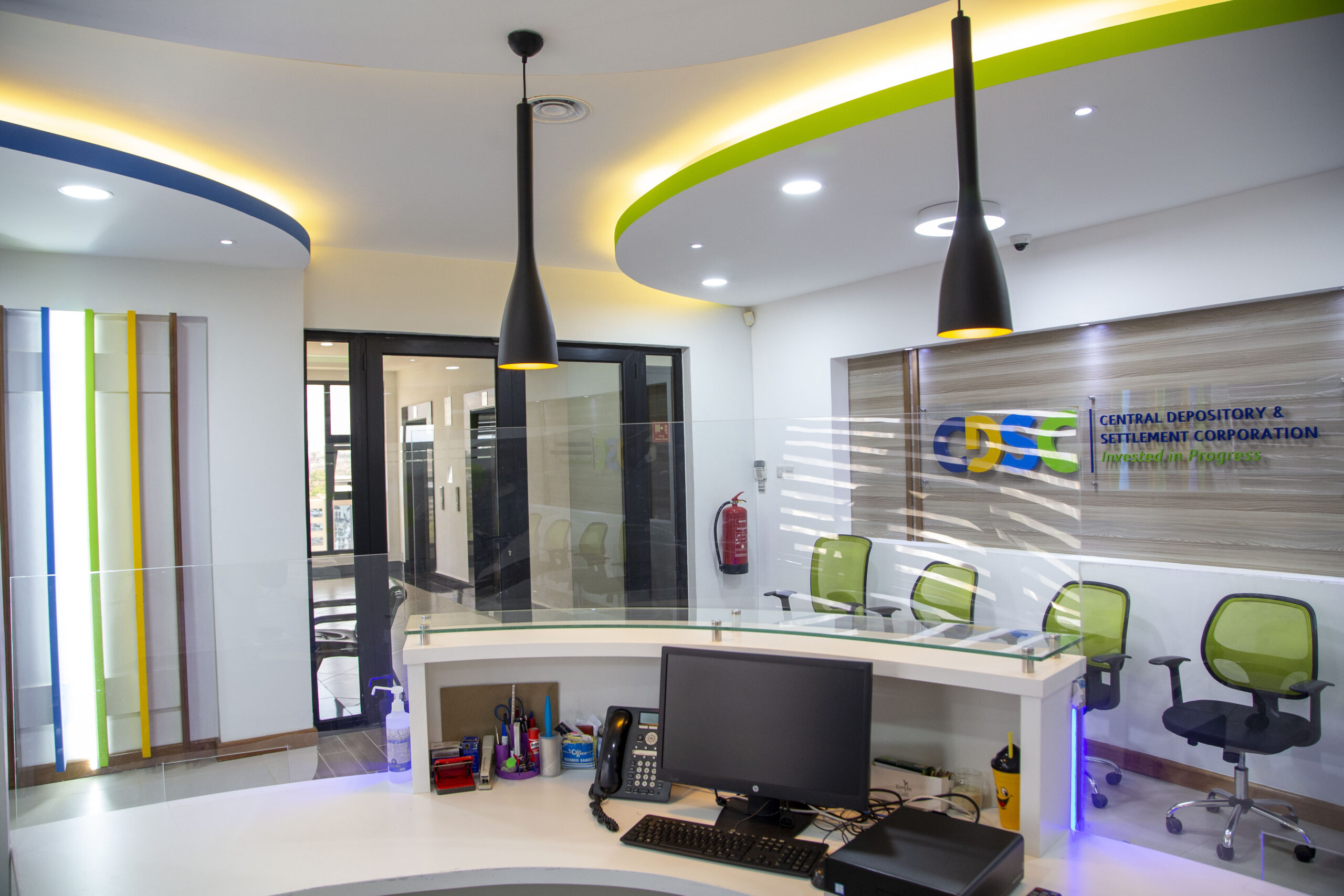
INTERIOR DESIGN MATERIALS IN TANZANIA
At its core, Interior design is problem solving through creating and re-creating functional and appealing spaces. Central to this discipline is the careful selection of materials. They play a critical role in shaping the feel and functionality of any commercial interior design space. In this article I will highlight the importance of materials in interior design, the commonly used materials and factors to consider when selecting these materials.
Importance of interior design materials
In interior design, materials are the fundamental elements that enable a designer to realize their vision. They give a space or design in general functionality. They significantly influence the occupant’s experience. As designers strive to create eco-friendly and sustainable designs, the correct use of materials helps them achieve green design with ease. Last but not least, the choice of materials in interior design affect visual appeal, acoustic properties, thermal comfort and general ambience and feel of a space.
Types of materials used in interior design
1. Wood
Wood is a material that has stood the test of time. Its versatility adds warmth and beauty to corporate interiors. Furthermore, it upholds the principles of green design making it a suitable material. Wood is used to make furniture, partitions and fittings that are found in an office. Hardwood and softwood are used to make different types of furniture to suit their different functions. It can be finished in various ways to suit different design styles.
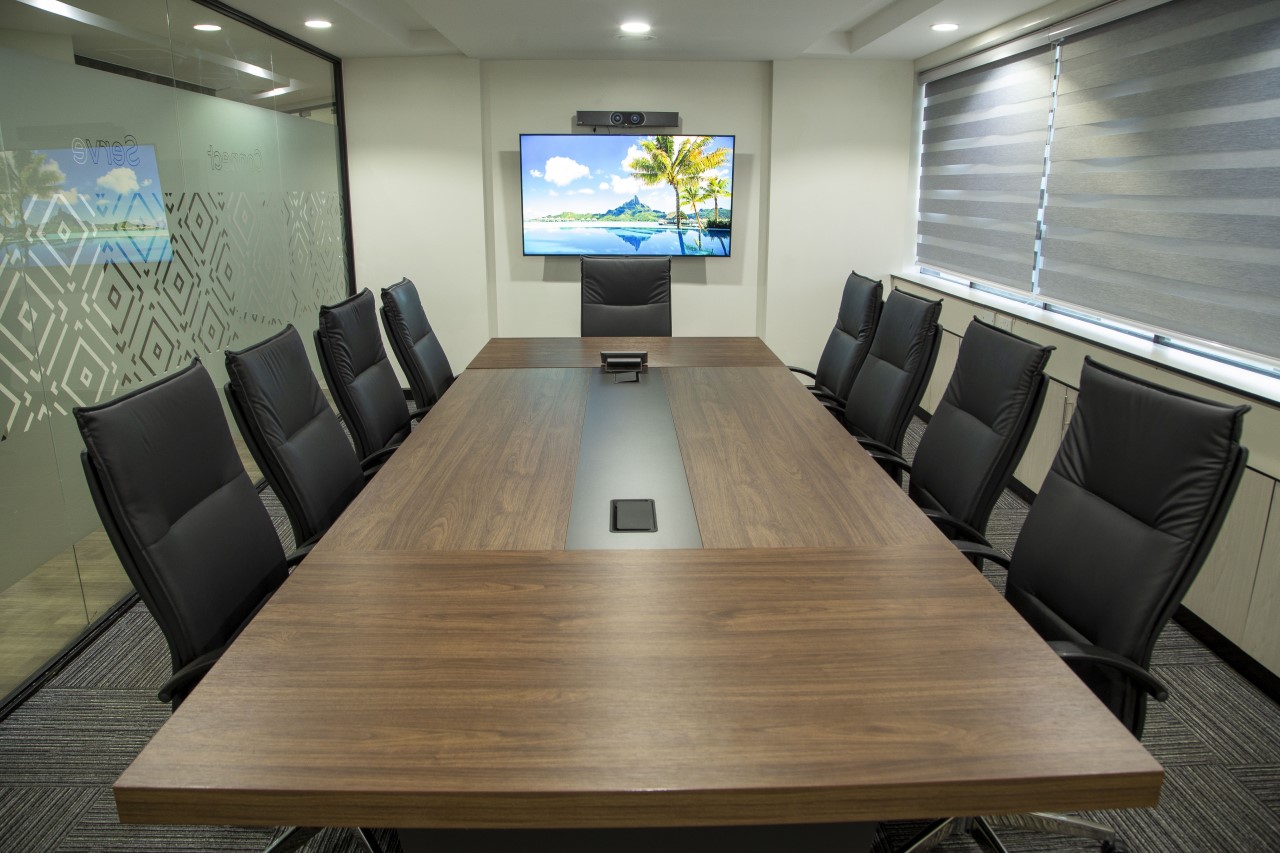
A boardroom table made of hardwood material in Tanzania
2. Metal
Metal materials in interior design including steel, aluminum, brass and copper are known for their strength, durability and sleek appearance. Metals are often used in modern and industrial design styles for elements like furniture frames, lighting fixtures, partition stands and interior detailing.. They can be polished for a high-gloss finish, brushed for a matte look and sometimes patinated for a vintage feel.

Metals used to support glass in making short partitions.
3. Glass
Glass is valued for its ability to reflect and transmit light. In interior design, it is used in enhancing the brightness and spaciousness of a room. Glass offers a variety of aesthetic options. It can be clear, frosted, tinted or textured. In office spaces, it is commonly used to make office partitions.
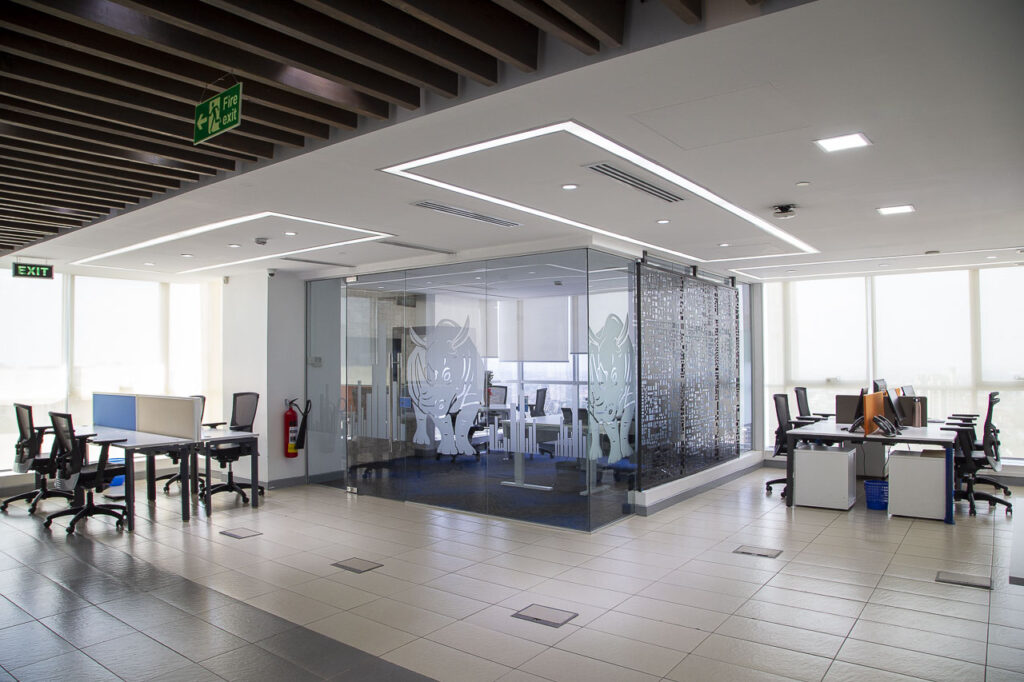
Glass material used to make the walls of an office in Tanzania
4. Ceramic and Porcelain
Ceramic and porcelain tiles are interior design materials which are popular for their durability, ease of maintenance and wide range. They are often used for flooring and bathroom walls. These materials can mimic the look of natural stone, wood or other surfaces while providing water resistance and resilience.
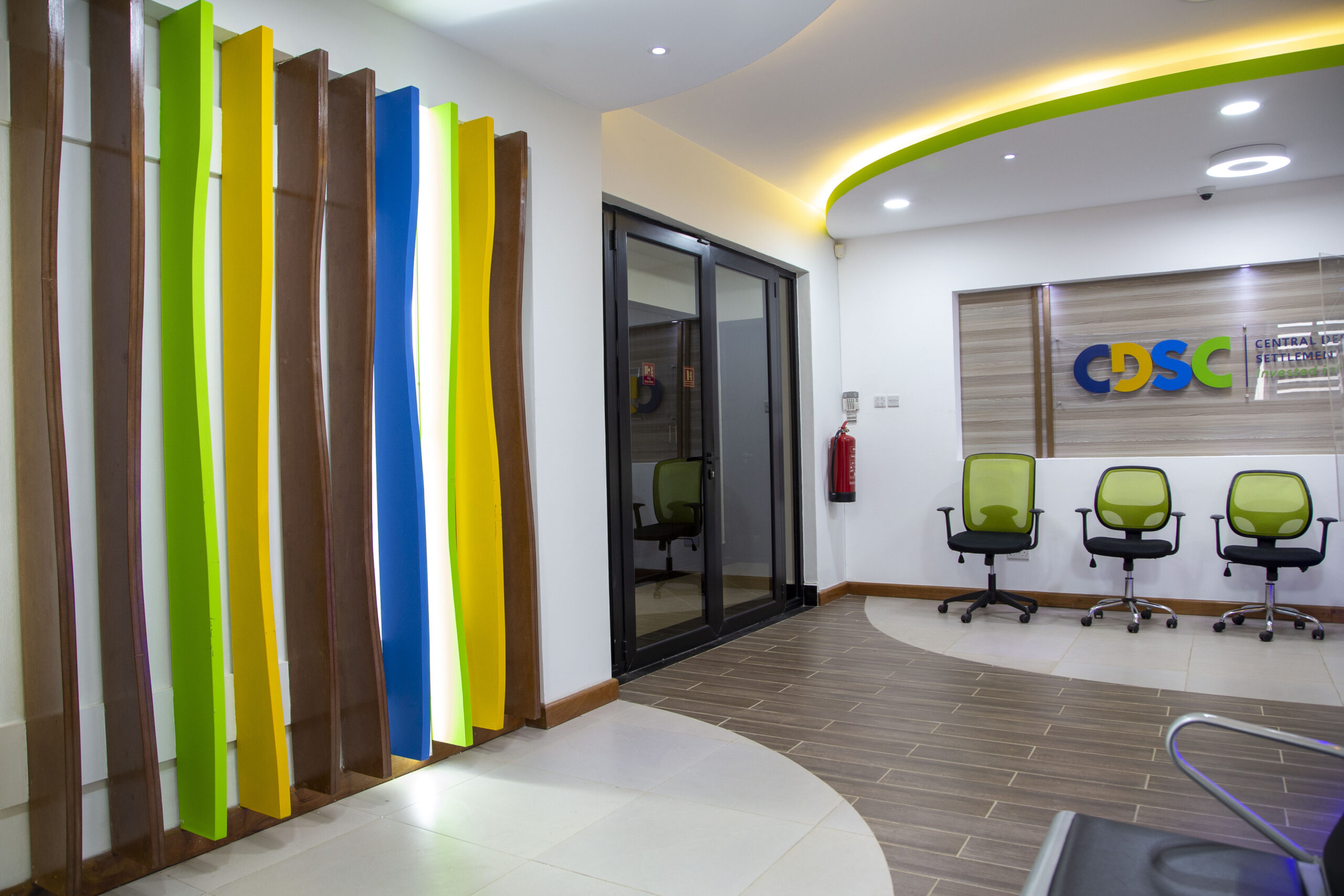
Off white office tiles made of ceramic.
5. Stone
Natural stone such as marble, granite, limestone and slate infuse commercial interiors with a sense of luxury and permanence. Stone is frequently utilized for countertops, flooring and accent walls. Natural stone is ideal for creating striking focal points in offices and lobbies. Renowned for its durability and longevity, natural stone is a strong choice for high-traffic areas. However, its premium appeal comes with a need for proper maintenance and care, ensuring that commercial spaces retain their sophisticated appearance over time.
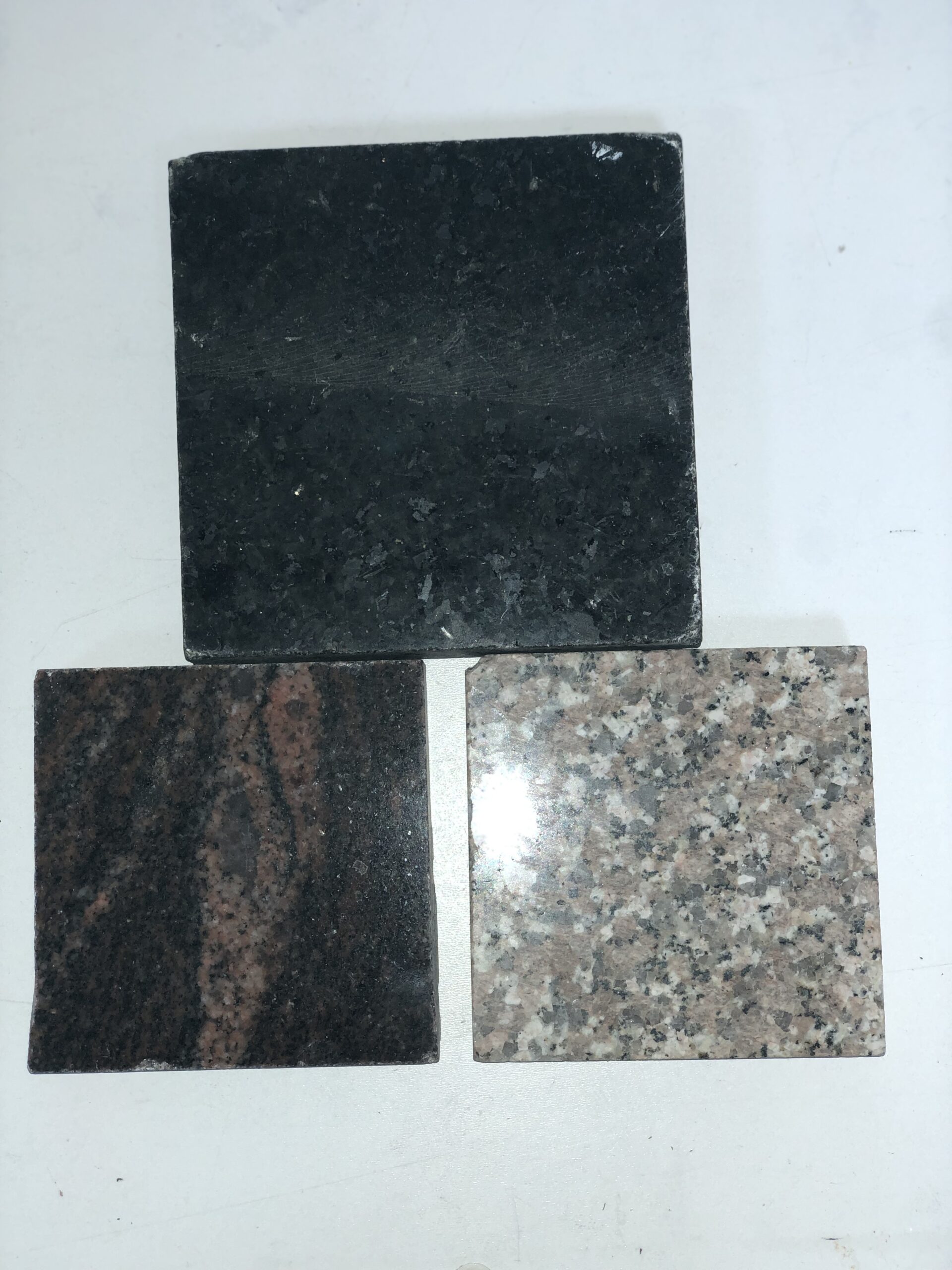
Granite samples for countertops.
Factors to consider when selecting materials in interior design
- Functionality
- Aesthetics
- Sustainability
- Budget
- Maintenance
In conclusion, materials influence every aspect of design from functionality to aesthetics. As the field of interior design continues to evolve, the thoughtful integration of diverse materials will remain a cornerstone of creating spaces that inspire, comfort, and delight. At Design Forty, we ensure quality and usage of materials is up to standard. Would you like us to design your space? Contact us today.